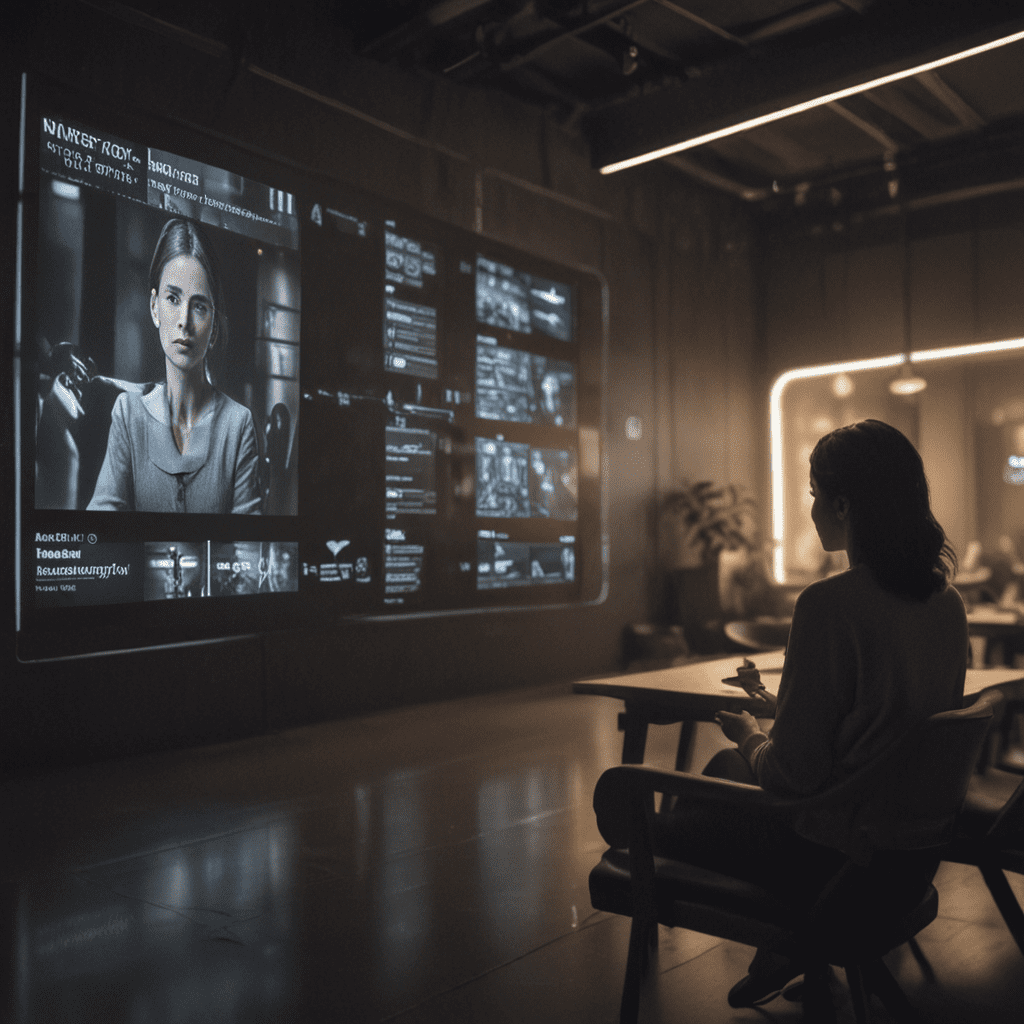The Future of User Experience (UX) Design in Artificial Intelligence
1. Introduction: The Convergence of UX and AI
In the rapidly evolving landscape of technology, the convergence of User Experience (UX) design and Artificial Intelligence (AI) is shaping the future of digital interactions. AI technologies are transforming the way we design and deliver personalized, engaging, and intuitive user experiences.
As AI becomes more integrated into our daily lives, UX designers must adapt their practices to harness the potential of these technologies. By leveraging AI's ability to analyze data, automate tasks, and create personalized experiences, we can create more seamless, efficient, and satisfying user journeys.
2. AI-Driven Personalization and User Engagement
AI algorithms can analyze vast amounts of user data to identify patterns and preferences. This enables UX designers to create highly personalized experiences tailored to individual users. AI-powered recommendations, for example, can proactively suggest relevant products, content, or services based on a user's past interactions.
Moreover, AI chatbots and virtual assistants enhance user engagement by providing instant support and information. These conversational interfaces simulate human interactions, making it easier for users to navigate complex websites or resolve issues on the go.
3. Conversational Interfaces and Natural Language Processing
Conversational interfaces have become increasingly popular as AI-powered natural language processing (NLP) technologies improve. NLP enables AI systems to understand and respond to user requests in a natural and intuitive way.
UX designers can create conversational interfaces that allow users to interact with digital products as they would with a human. This simplifies the user journey, reduces cognitive load, and makes interacting with technology more accessible.
4. Predictive UX and Anticipating User Needs
AI algorithms can analyze user behavior and predict future actions. This predictive power allows UX designers to anticipate user needs and create proactive experiences. For example, AI can predict when a user is likely to abandon a purchase and suggest additional incentives to encourage completion.
By anticipating user needs, UX designers can create more seamless and efficient experiences that reduce friction and enhance user satisfaction.
5. Data-Driven Design and User Analytics
AI analytics provide valuable insights into user behavior and preferences. UX designers can use this data to make informed decisions about design improvements, product updates, and marketing campaigns.
By analyzing user analytics, UX designers can identify areas for improvement, optimize the user journey, and measure the effectiveness of their design decisions. This data-driven approach ensures that UX design is rooted in evidence and user feedback, leading to more successful and user-centric products and services.
6. The Ethics of AI in UX: Privacy, Transparency, and Accessibility
As AI becomes more prevalent in UX design, it's essential to address ethical considerations, particularly regarding privacy, transparency, and accessibility.
UX designers must ensure that AI systems are designed with user privacy in mind. Data collected for personalization purposes should be anonymized and used responsibly. Transparent communication about data usage and AI algorithms builds trust and empowers users to make informed choices.
Moreover, UX designers have a responsibility to design AI experiences that are accessible to all users, regardless of their abilities or disabilities. AI-powered chatbots, for example, should provide alternative communication methods for users with hearing or speech impairments.
7. Immersive and Multimodal Experiences
AI is fueling the development of immersive and multimodal user experiences. Virtual reality (VR) and augmented reality (AR) technologies, powered by AI, create realistic and engaging environments that extend the boundaries of traditional digital experiences.
UX designers can leverage AI to enhance these immersive experiences by providing personalized content, adapting to user preferences, and enabling natural interactions within virtual worlds.
8. AI-Powered Visual Design and Accessibility
AI algorithms can assist UX designers in creating visually appealing and accessible designs. AI-powered image generation, for example, can generate unique and tailored visual content based on user preferences and context.
Moreover, AI can analyze color contrast and font readability to ensure accessibility for users with visual impairments. By leveraging AI's capabilities, UX designers can create visually stunning and inclusive experiences for all.
9. The Role of Storytelling and Emotional Intelligence in AI-Enhanced UX
AI is not only about data and algorithms but also about human emotions and experiences. UX designers must consider the emotional impact of AI-powered interactions.
By incorporating storytelling techniques and leveraging AI's ability to recognize and respond to human emotions, UX designers can create more engaging and meaningful experiences. AI-powered chatbots, for example, can exhibit empathy and provide personalized emotional support.
10. Future Predictions and Emerging Trends
The future of UX design in AI holds exciting possibilities. AI-powered UX is expected to become even more context-aware, adaptive, and personalized.
Emerging trends include the integration of AI with machine learning, deep learning, and edge computing. These advancements will enable AI-powered UX to deliver real-time, highly tailored experiences that adapt to users' needs in real-time.
FAQs
Q: How can UX designers prepare for the future of AI-enhanced UX?
A: UX designers can stay ahead of the curve by embracing AI technologies, mastering data analytics, and focusing on human-centered design principles.
Q: What are the limitations of AI in UX design?
A: While AI offers powerful capabilities, it's important to recognize its limitations. AI algorithms can be biased, and it's crucial to address ethical considerations related to privacy, transparency, and accessibility.
Q: How can AI be used to improve the user experience for people with disabilities?
A: AI can assist UX designers in creating accessible experiences by analyzing color contrast, providing alternative communication methods, and personalizing content to meet individual needs.

